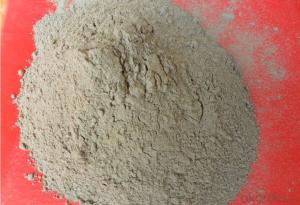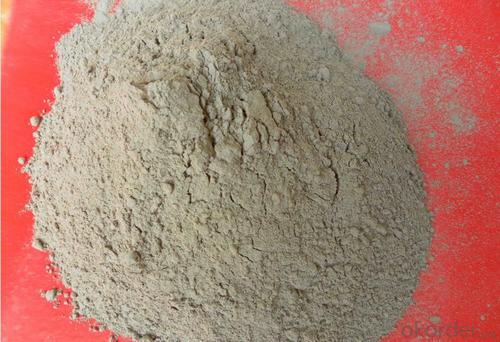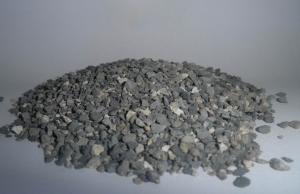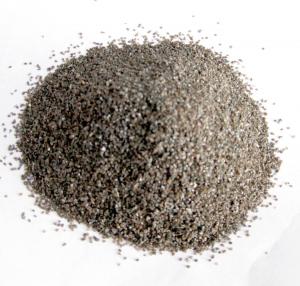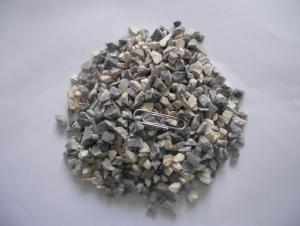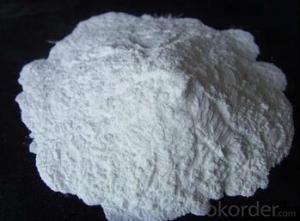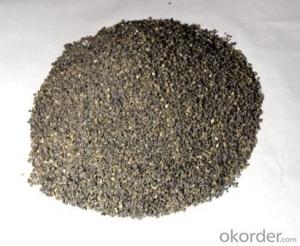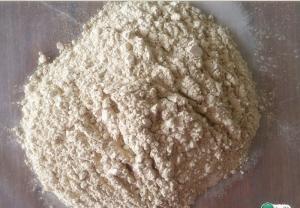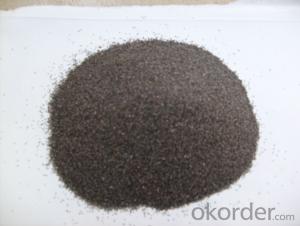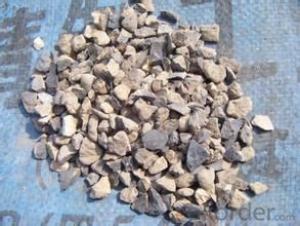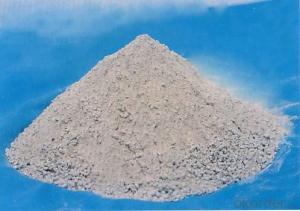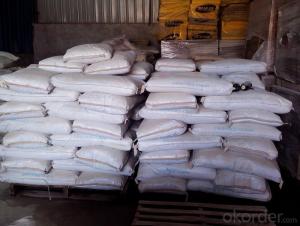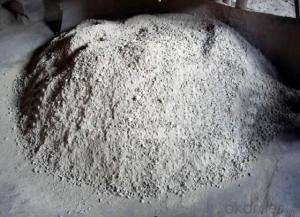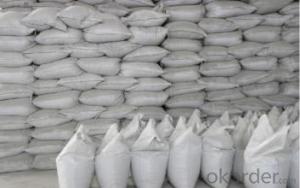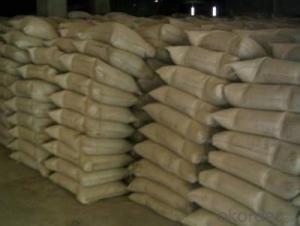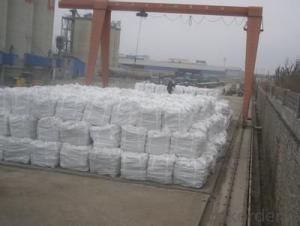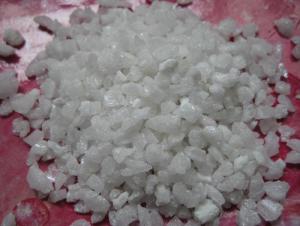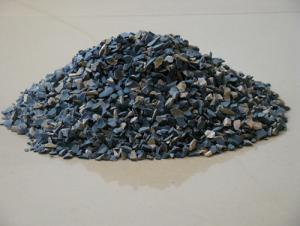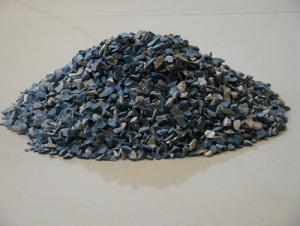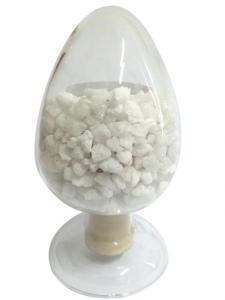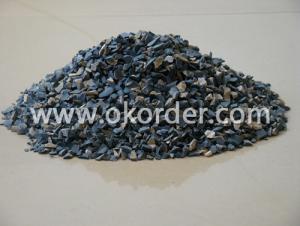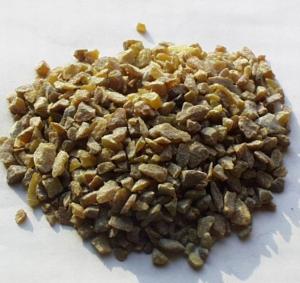Raw Materials for Refractory:High Alumina Cement Fire Clay Refractory Cement
- Loading Port:
- Tianjin
- Payment Terms:
- TT OR LC
- Min Order Qty:
- 0 m.t.
- Supply Capability:
- 60000 m.t./month
OKorder Service Pledge
OKorder Financial Service
You Might Also Like
High Temperature Castable Refractory Cement
Product Description
Refractoriness of not less than 1580 °C cement. According to the composition of different can be divided into low calcium aluminate refractory cement, calcium aluminate cement, calcium aluminate cement and dolomite refractory cement. It can be used for various refractory cement cement refractory aggregate (such as corundum, Calcined Bauxite,etc.) made of refractory mortar or concrete, used in cement rotary kiln and other industrial furnace lining.
Specifications
Refractory cement lining baking, must pay attention to the following matters:
1) at room temperature 350 degrees, most likely caused by local spalling, special attention should be paid to slow baked. As in the 350 degree heat preservation is still a lot of steam coming out, still should slow heating rate.
2) in poor ventilation, water is not easy to discharge conditions, to extend the preservation time.
3) when using heavy oil for baking, to prevent oil spray on the lining surface, to prevent local burst.
4) when using firewood baked, direct contact with the flame is often caused by local heating too fast, should be protected.
5) on refractory cement pouring, at least by 3D after baking.
6) for refractory cement lining cooling slowly, avoid the forced ventilation.
Products Photos
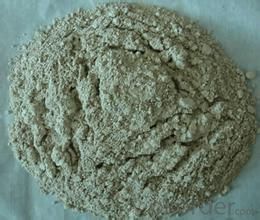
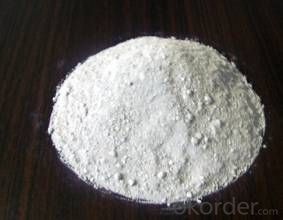
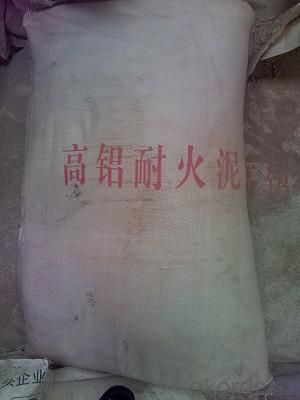
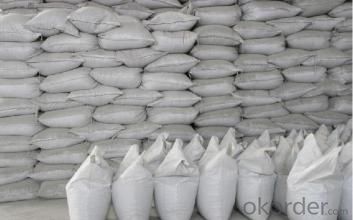
Aluminate Cement | Type | CA50-G5 | CA50-G7 (725#) | CA50-G9 (925#) | CA50-F9 (SECAR51) | ||
Items | Unit | Standard | Results | Test data | |||
Blaine | cm2/g | GB8074-87 | 3000 Min | 3000 Min | 4000 Min | 4500 Min | |
Initial time | hour:minute | GB/T17671-1989 | 0:30 Min | 0:30 Min | 1:30 Min | 4:20 | |
Final time | 6:00 Max | 6:00 Max | 6:00 Max | 4:50 | |||
Flexural | 1 day | Mpa | GB/T17671-1999 | 5.5 Min | 7.0 Min | 9.0 Min | 11.5 |
Strengh | 3 days | 6.5 MIN | 8.0 Min | 10.0 Min | 12.3 | ||
Compressure | 1 day | 40 Min | 50 Min | 70 Min | 79.5 | ||
Strengh | 3 days | 50 Min | 60 Min | 80 Min | 85 | ||
Chemical Composition | SiO2 | % | GB/T205-2000 | 8.0 Max | 7.0 Max | 5.5 Max | 4.75 |
Al2O3 | 51.0 Min | 52.0 Min | 54.0 Min | 52.08 | |||
Fe2O3 | 2.5 Max | 2.5 Max | 2.0 Max | 1.82 | |||
CaO | 33.0 Min | 33.0 Min | 33.5 Min | 36.46 | |||
MgO | 1.0 Max | 1.0 Max | 1.0 Max | 1.22 | |||
TiO2 | 3.0 Max | 3.0 Max | 3.0 Max | 2.67 | |||
Note | PACKING | ||||||
25 KG X 40 BAGS ON A WOODEN PALLET WITH FILM AND P/W COVER Qoality of Goods confirms to China standard GB201-2000 | |||||||
- Q: What problems should be paid attention to while using refractory materials under a controlled atmosphere?
- Pay attention to the performance of the materials, and the use of non oxide materials!
- Q: Which are fireproofing external wall materials?
- 1. Acording to national standard GB8624-97, the combustion performance of construction materials are classified as: Grade-A: incombustible building material: Grade-A WW thermal insulation material which hardly burns. Grade-B1: nonflammable building material: nonflammable building material has good flame resistance. It is difficult to burn or spread in the air or at high temperature. Grade-B1: nonflammable building material: nonflammable building material has good flame resistance. It is easy to burn in the air or at high temperature, thus spreading the fire, such as wooden column, timber roof truss, timber beam and wooden stairway. Grade-B3: inflammable building material. Without fire resistance, inflammable building material is easy to burn and thus cause a fire. 2. According to fireproofing performance, external wall thermal insulation materials can be classified as: 1. Thermal insulation material with Grade-A combustion performance: WW inorganic thermal insulation material, rock wool, glass wool, foam glass, foamed ceramics and foam cement. 2. Thermal insulation material with Grade-B1 combustion performance: XPS panel after special treatment/ PU, phenolic aldehyde, gelatine powder polyphenyl granule after special treatment. 3. Thermal insulation material with Grade-B2 combustion performance: EPS, XPS, PU, PE, ETC.
- Q: Who can tell me about the foundry refractory materials?
- Such as: neutral, alkalic, acidic refractories. Of course, the raw materials of different materials are not the same. Such as: the magnesia-carbon bricks, basic refractory materials: magnesite(electric?smelting, high-purity)+ crystalline flake graphite+ phenolic resin+ additive (aluminate or silicon powder or silicon carbide powder or high-temperature pitch) and so on.
- Q: What is fireproofing material? Are fireproof materials the same thing with thermal insulation materials and refractories?
- Insulation materials. Thermal insulation material is characterized by thermal insulation, which is one of the four traditional inorganic nonmetallic materials. Fire?retardant material is cahracterized by heat-resistant. Refractory is a kind of materials of resisit high temperature. Fireproof material, which is different from thermal insulation material and refractory, is a synthetic material with some fireproof subtrate added. It is essentially resistant to high temperature.
- Q: what is the common materials for home fireproofing material?
- 1, lumber core 2,decoration panel 3 , plywood 4 density board 5,chipboard 6 fireproof?panel, 7.gypsum board Hope to adopt my opinion
- Q: what is the fireproofing material of engine room? who knows it ?
- machine room fireproofing materials include: Inorganic binder: The main material includes sodium silicate, gypsum, phosphates, cement,ect.; refractory mineral filler: aluminium oxide, asbestos powder, calcium carbonate, perlite, cornstarch, ect.; nonflammable organic resin: it mainly includes polyvinyl chloride, perchloro-ethylene, chlorinated rubber, neoprene latex, epoxy resin, phenol resin, ect.. nonflammable fireproof addictive: it mainly has phosphorus, halogens, nitrogen organic compounds (chlorinated paraffins, tributyl phosphate,deca-brominated diphenyl ether), and boron series (boric acid, zinc borate, aluminium borate), antimony system, aluminium series, zirconium system, etc. inorganic compounds.
- Q: What's the frequently used refractory material?
- Refractory material is generally used in industrial departments like metallurgy, glass, cement, ceramics, machinery, hot working, petrochemical industry, power and national defense. Frequently used common refractory: silica?brick, semi-silica brick, clay brick, high alumina brick, magnesia brick, etc. Frequently used special refractory: AZS brick, corundum brick, direct-bonded?magnesia-chrome?bricks, carborundum brick, calcium oxide, chromium hemitrioxide, alumina, magnesium oxide, etc. Frequently used fireclay insulating refractory: diatomite product, asbestos product, insulation?board, etc. Frequently used unshaped refractory: ramming refractory, refractory castable, plastic refractory, refractory mortar, gun-mix refractory, refractory coating, lightweight refractory?castables, etc.
- Q: What are the types of advanced refractory?
- Hello there: Divided into two categories of general and special refractories ordinary refractories by chemical properties into acidic, neutral and alkaline. Special refractory composition is divided by high temperature oxide, refractory compounds and high-temperature composite materials Furthermore, according to refractoriness can be divided into ordinary refractory products (1580 ~ 1770 ℃), advanced refractory products (1770 ~ 2000 ℃) and grade refractory products (2000 ℃ above). the article can be divided into blocks (standard bricks, shaped bricks, etc. ), special shape (crucible, sagger, pipe, etc.), fibrous (aluminosilicate, zirconia and boron carbide quality, etc.) and a random shape (refractory clay, pouring materials and ramming mixes, etc.) according to the sintering process it can be divided into sintered products, cast products, melt blown products.
- Q: can slag tailings be used to be the base materials of refractory materials ?
- the rest of it can be used as refractory additives. the scale currently used clay bricks to make high-temperature liquid. It is easy to produce large amounts of liquid because of the high iron content, instead of its refractoriness. But it can be used as refractory minaralizer.
Send your message to us
Raw Materials for Refractory:High Alumina Cement Fire Clay Refractory Cement
- Loading Port:
- Tianjin
- Payment Terms:
- TT OR LC
- Min Order Qty:
- 0 m.t.
- Supply Capability:
- 60000 m.t./month
OKorder Service Pledge
OKorder Financial Service
Similar products
Hot products
Hot Searches
Related keywords
